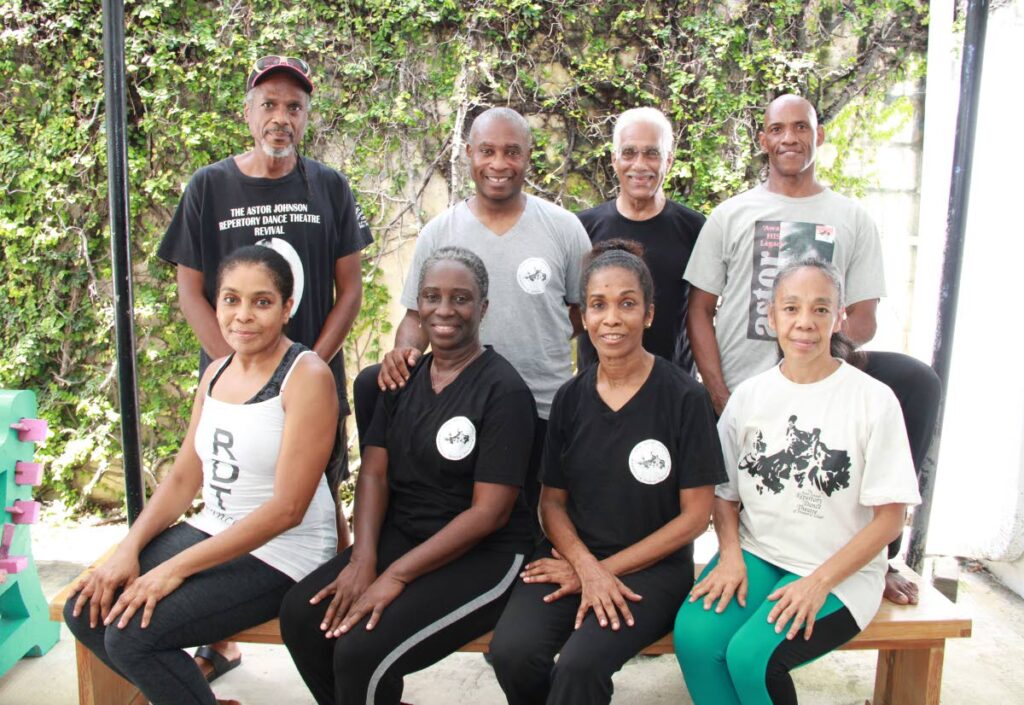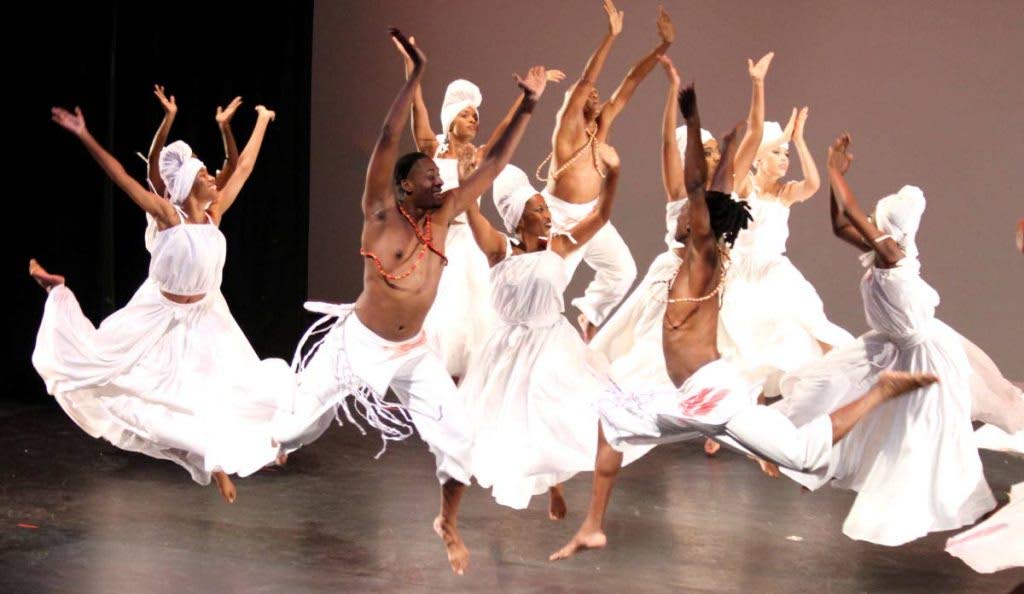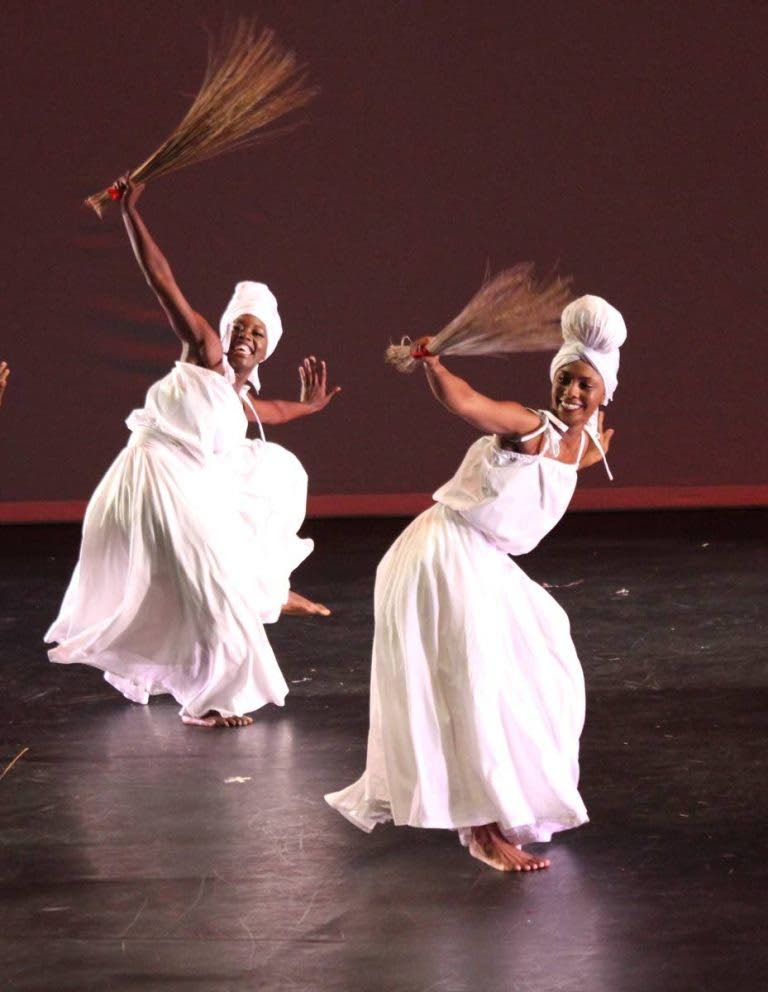Astor's legacy: After five decades, dance company keeps choreographer's work alive

It takes a number of different skill sets to put on a successful dance production. The choreography, performances, lighting, sound, costuming and everything else must be well rehearsed and effectively delivered in order to get the desired reaction from the audience – a standard that artistic director and choreographer Astor Johnson set when he formed the Astor Johnson Repertory Dance Theatre in the 1970s.
Five decades later, its members celebrated its golden anniversary with a grand show at Queen’s Hall, St Ann’s on September 14, in keeping with that standard and the legacy left by Johnson, who died in New York in September 1985.
“All of us were and are very committed to Astor and his work,” director of the dance company Allison Seepaul told Sunday Newsday.
“Part of our mission is to ensure that Astor’s work, which we feel is enduring and full of messages, must be remembered because it is still quite relevant today. We feel his work needs to be seen and must not stay on a shelf collecting dust, and that his choreography efforts be seen by people.”
The management team comprises Seepaul; Susan Shurland; Joanna Charles; Kyle Young; Terry Springer; Stephen Seepaul; Marlon Phillip and Roxanne Fung.

Johnson left TT in the 1960s to study for a degree in education at Howard University in the US. While there he continued to perform and made appearances with the Trinidad Steelband of Washington. He also trained at dance institutes such as the Erika Thimey Dance Theatre, the Harlem Dance Theatre, and the Maida Withers and Paul Sansardo School of New York.
He returned to TT in 1970 and formed the the Astor Johnson Repertory Dance Theatre, which was awarded a TT Humming Bird Medal Gold in 1989 for its contribution to culture. In 1991 he was posthumously awarded a Humming Bird Medal (Silver) for culture.
“Prior to his passing I had never had any one close to me die, so it was a shock. I felt like an orphan,” Seepaul recalled.

Seepaul, who had left TT to study in the US, said she first met Johnson while she was a dance student at the Alvin Ailey Dance School in New York. Students there were invited to TT to perform at a dance festival “and that’s when I encountered Astor and decided to stay (in TT). Since then the company has been a part of my life.”
Rehearsals were then held on Tuesdays, Thursdays and Saturdays on St Vincent Street, Port of Spain, in a space in the building that housed the National Archives.
After Johnson died, the dance company continued to function, and in 2015, Seepaul said, things were a little bit more formalised and they began hosting more events, workshops and symposiums and invited young dancers to be a part of it.
“Just before the covid19 pandemic shut down everything we hosted an event, An Evening With Astor, at the Little Carib Theatre. Covid came along and this show we hosted at Queen’s Hall for the 50th anniversary was our ‘coming out’ of it.”
She said the management team plans to take the name and philosophy of Johnson not only throughout TT, but internationally as well.
“We are committed to youth education by exposing a lot of young dancers to his work. We also plan to do worldwide tours.”

She said through dance, many young people have been able to have successful careers abroad.
“And we want to see that happen in TT too, and not just on the stage. There are the technical areas such as lighting, costuming etc. We want to encourage young people to find different lucrative career choices in areas other than the traditional.”
The company recently hosted a show for schools, as Johnson is one of the dancers whom students of dance need to research at secondary school. She said it was very encouraging, as the students were really interested in Johnson’s work.
“He was very well read – his background was in literature – he was a teacher and a very humble person, and his culture was of sharing, lifting up and strengthening others.”
Seepaul said one his hallmarks was that he worked towards what he called “cross-fertilisation” in dance.
"He worked with the late dancer and choreographer Julia Edwards, also known as "The First Lady of Limbo," and was a close friend of Beryl McBurnie, “so he was versed in folk dance – all local indigenous dances. He was exposed to modern dance in Washington, and ballet and jazz in New York. When he came back to TT he just absorbed everything, bringing it all together was an artistic renaissance.”
Seepaul said when Johnson was alive the company had two dance seasons, in July and November.
“But this year things didn’t follow a particular pattern because of covid…This season we invited the young dancers to come out and join us. We had a mixture of young and seasoned dancers from way back when.
"We are not in a position to pay dancers for their work as yet, but it is really heartwarming to see them come out and give of their talents. Some of them were not even born when Astor was here, but they just came and gave. That is one of the greatest takeaways from this season.”

She said it is the company's hope that it will soon be able to begin outreach programmes, as much as time will allow.
“Management people are also working people, so we have to find the time outside of our jobs to do it.”
And as far as funding goes, she said the company will approach corporate TT and government agencies, “because our focus really is the youth and getting them to realise the importance of the arts.”

Comments
"Astor’s legacy: After five decades, dance company keeps choreographer’s work alive"